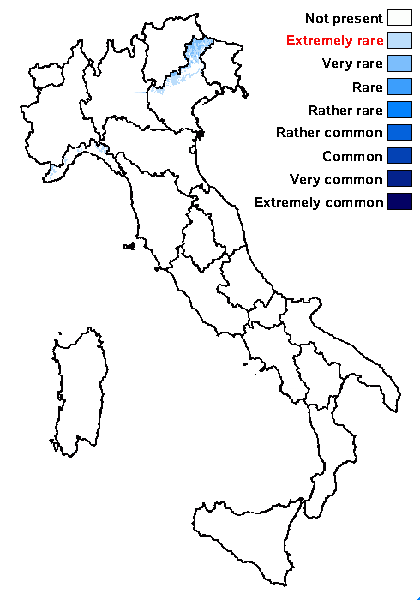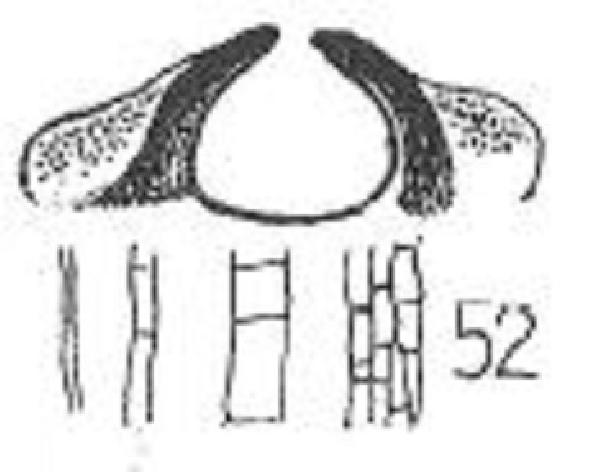Verrucaria nigrofusca Servít
Acta Mus. Nat. Pragae, 5, B, 9, Bot. 3: 38, 1949.
Synonyms: Lithoicea nigrescens var. umbrina A. Massal.; Verrucaria nigroumbrina Servít
Distribution: N - Ven, Lig.
Description: Thallus crustose, episubstratic, dull brown, continuous to rimose-areolate, 0.2-0.3 mm thick, sometimes delimited by a thin black prothallus, the areoles angular to irregular, flat, smooth, 0.2-0.5 mm wide (the fertile ones up to 0.8 mm wide), often subdivided into smaller units. Cortex poorly developed, brown in uppermost part; medulla white or patchily brown (especially around perithecia), sometimes pale brown in lowermost part, but without a black basal layer. Perithecia black, 1 per areole, almost fully immersed or hemispherically projecting, without a thalline covering. Involucrellum adpressed to exciple, extending to base-level, up to 80-100 µm thick at base; exciple subglobose to broadly pyriform, 0.2-0.3 mm across, the wall colourless to dark brown, 15-20 µm thick; hamathecium of 25-35 µm long, thin, mostly simple periphyses and periphysoids, interascal filaments absent; hymenial gel hemiamyloid, I+ red (I+ blue at very low concentrations of I), K/I+ blue. Asci 8-spored, clavate, I-, fissitunicate, the wall thickened above, with an ocular chamber, dehiscent by extrusion of an endotunica to form a delicate rostrum, Verrucaria-type. Ascospores 1-celled, hyaline, ellipsoid, 17-24 x 8-12 µm. Photobiont chlorococcoid. Spot tests: K-, C-, KC-, P-, UV-. Chemistry: without lichen substances.Note: a very poorly known species, described from the Czech Republic and also reported from France (Maritime Alps), on both calcareous and basic siliceous rocks. According to Breuss (2016) it differs from V. fuscoatroides in the smaller perithecia and spores.
Growth form: Crustose
Substrata: rocks
Photobiont: green algae other than Trentepohlia
Reproductive strategy: mainly sexual
Poorly known taxon in need of further study
Commonnes-rarity: (info)
Alpine belt: very rare
Subalpine belt: very rare
Oromediterranean belt: absent
Montane belt: extremely rare
Submediterranean belt: absent
Padanian area: absent
Humid submediterranean belt: absent
Humid mediterranean belt: absent
Dry mediterranean belt: absent

Predictive model
Growth form: Crustose
Substrata: rocks
Photobiont: green algae other than Trentepohlia
Reproductive strategy: mainly sexual
Poorly known taxon in need of further study
Commonnes-rarity: (info)
Alpine belt: very rare
Subalpine belt: very rare
Oromediterranean belt: absent
Montane belt: extremely rare
Submediterranean belt: absent
Padanian area: absent
Humid submediterranean belt: absent
Humid mediterranean belt: absent
Dry mediterranean belt: absent

Predictive model
 Index Fungorum
Index Fungorum
 GBIF
GBIF


